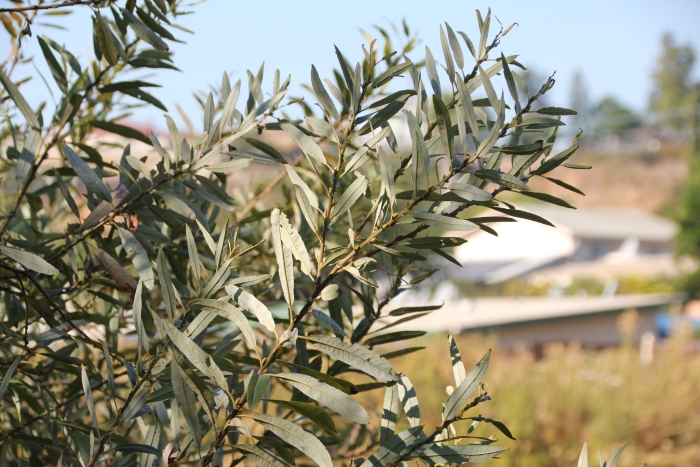Arroyo Willow
(Salix lasiolepis)
Arroyo Willow (Salix lasiolepis)
/
/

Millie Basden
CC BY 4.0
Image By:
Millie Basden
Recorded By:
Copyright:
CC BY 4.0
Copyright Notice:
Photo by: Millie Basden | License Type: CC BY 4.0 | License URL: http://creativecommons.org/licenses/by/4.0/ | Rights Holder: Millie Basden | Publisher: iNaturalist | Date Created: 2017-10-26T10:27-07:00 |























































Estimated Native Range
Summary
Salix lasiolepis, commonly known as Arroyo Willow, is a deciduous shrub or small tree native to riparian zones, wetlands, and moist woodlands in the Western and Intermountain regions of the USA, as well as Northern Mexico. It can grow up to 10 meters (33 ft) tall with a similar spread, often forming dense thickets. The young shoots are yellowish-brown and densely hairy, while mature bark becomes deeply furrowed. The leaves are lanceolate, green above, and glaucous green below, with whitish or rusty hairs on the underside that diminish over time. Arroyo Willow produces yellow catkins 1.5–7 centimeters (0.59–2.76 in) long from February to May, which are particularly attractive to bees and other pollinators.
Arroyo Willow is valued for its ability to stabilize streambanks and for its wildlife habitat benefits, providing food and shelter for birds and insects. It is often used in riparian restoration projects and can be planted in wet areas of the landscape where other plants might struggle. This species thrives in full sun to part shade and requires high amounts of water, making it suitable for areas with natural or supplemental moisture. It is adaptable to a range of soil drainage conditions, from fast to slow. While generally low-maintenance, it can be susceptible to willow beetle and aphid infestations. It is not typically invasive but can spread through root suckers if conditions are favorable.CC BY-SA 4.0
Arroyo Willow is valued for its ability to stabilize streambanks and for its wildlife habitat benefits, providing food and shelter for birds and insects. It is often used in riparian restoration projects and can be planted in wet areas of the landscape where other plants might struggle. This species thrives in full sun to part shade and requires high amounts of water, making it suitable for areas with natural or supplemental moisture. It is adaptable to a range of soil drainage conditions, from fast to slow. While generally low-maintenance, it can be susceptible to willow beetle and aphid infestations. It is not typically invasive but can spread through root suckers if conditions are favorable.CC BY-SA 4.0
Plant Description
- Plant Type: Shrub, Tree
- Height: 10-35 feet
- Width: 10-25 feet
- Growth Rate: Moderate
- Flower Color: N/A
- Flowering Season: Spring
- Leaf Retention: Deciduous
Growth Requirements
- Sun: Full Sun, Part Shade
- Water: High
- Drainage: Fast, Medium, Slow
Common Uses
Bee Garden, Bird Garden, Butterfly Garden, Deer Resistant, Erosion Control, Fire Resistant, Low Maintenance, Water Garden
Natural Habitat
Native to riparian zones, wetlands, and moist woodlands
Other Names
Common Names:
Scientific Names: Salix lasiolepis , Salix lasiolepis var. lasiolepis , Salix lasiolepis var. sandbergii , Salix schaffneri , Salix lasiolepis var. bracelinae , Salix bakeri , Salix lasiolepis var. bakeri , Salix sandbergii , Salix boiseana , Salix lasiolepis var. fallax
GBIF Accepted Name: Salix lasiolepis Benth.